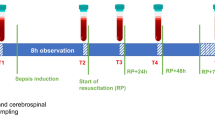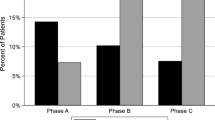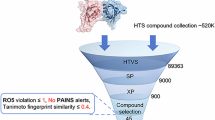Abstract
Summary: Metabolic observations during early stages of hyperammonemia in two infants with ornithine transcarbamylase deficiency suggest that plasma α-ketoglutarate concentration ([α-KG]) becomes subnormal before the development of hyperammonemic coma. In one case, plasma [NH4+] remained normal until 40 days of age when it rose to 57 μM. However, this hyperammonemia was preceded by a fall in plasma [α-KG] to 15 μM at 27 days of age. It was only after severe hyperammonemia was established at 50 days of age that coma supervened. In the second case, plasma [α-KG] became subnormal (14 μM) 8 days before the rise in plasma ammonium concentration [NH4+] (52 μM) and 14 days before the onset of hyperammonemic coma. In eight patients with urea cycle enzymopathies, there was a highly significant (P ≤0.01) negative linear correlation between [NH4+] and [α-KG]. In patients with portal-systemic encephalopathy, there was a similar relationship between [NH4+] and [α-KG], although the absolute [α-KG] levels in these patients were normal (23 ± 4 μM) while the patients were hyperammonemic (88 ± 25 μM).
Speculation: The inverse linear correlation between [α-KG] and [NH4] levels in patients with urea cycle enzymopathies suggest that plasma [a-KG] may presage hyperammonemic coma. However, the different [a-KC] levels in patients with cirrhosis and portalsystemic shunting imply different pathophysiologic mechanisms for hyperammonemic coma as compared to hepatic coma.
Similar content being viewed by others
Log in or create a free account to read this content
Gain free access to this article, as well as selected content from this journal and more on nature.com
or
Author information
Authors and Affiliations
Rights and permissions
About this article
Cite this article
Batshaw, M., Walser, M. & Brusilow, S. Plasma α-Ketoglutarate in Urea Cycle Enzymopathies and Its Role as a Harbinger of Hyperammonemic Coma. Pediatr Res 14, 1316–1319 (1980). https://doi.org/10.1203/00006450-198012000-00008
Issue date:
DOI: https://doi.org/10.1203/00006450-198012000-00008
Keywords
This article is cited by
-
Evidence of a vicious cycle in glutamine synthesis and breakdown in pathogenesis of hepatic encephalopathy–therapeutic perspectives
Metabolic Brain Disease (2014)
-
Acute metabolic encephalopathy: A review of causes, mechanisms and treatment
Journal of Inherited Metabolic Disease (1989)
-
Cerebral ammonia metabolism in normal and hyperammonemic rats
Neurochemical Pathology (1987)
-
Inhibitory effect of intravenous lysine infusion on urea cycle metabolism
European Journal of Pediatrics (1987)



